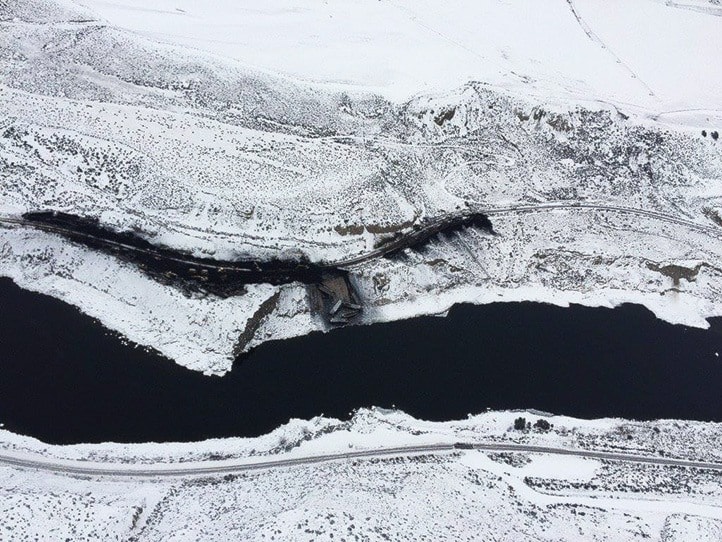The Do Not Consume (DNC) order that has been in place for a 50km stretch of the Thompson River since January 13 is still in effect pending more tests of the water.
The DNC order was put in place by Interior Health (IH) following a CP derailment seven kilometres west of Ashcroft on January 12. Twenty-nine rail cars carrying metallurgic coal derailed, and between 120 and 160 tonnes of coal were spilled into the Thompson and onto the bank above it.
Water testing sites were set up at the site of the derailment, as well as up- and downstream from it, and samples were sent to the Ministry of the Environment to be tested.
Coal is considered non-toxic, but metallurgic coal has been chemically treated. While the initial samples tested negative for hydrocarbons or other contaminants, it was determined that more samples would need to be tested for the presence of seven newly identified potential residues that could be linked to the coal.
“We received information from Teck Cominco about another process—frothing—that the coal went through,” says Dan Ferguson, manager of environmental health for IH. “The medical health officer wanted to ensure we tested for those chemicals [used in the frothing process] before lifting the order that is currently in place.”
CP has promised to return the derailment site to pre-event conditions. Remediation work has been ongoing since January 13, and will continue for at least another one to two weeks. Ferguson says IH will not be lifting any water advisory until CP has completed its remediation and all the coal has been cleaned up.
The cause of the derailment has not been determined, and the Transportation Safety Board (TSB), which is in charge of the incident, says that it could take up to a year to complete the investigation. James Carmichael, who is in charge of the investigation, says that any derailment investigation focuses on three areas.
“When we do an investigation, we look into how the train was being handled, we look at all the mechanical aspects of the locomotives and the rail cars themselves, and of course we look into the infrastructure of the track itself,” he says.
A TSB investigation into the cause of a collision between two CP trains near Golden in September 2015 did not reach its conclusion until January 2017.
